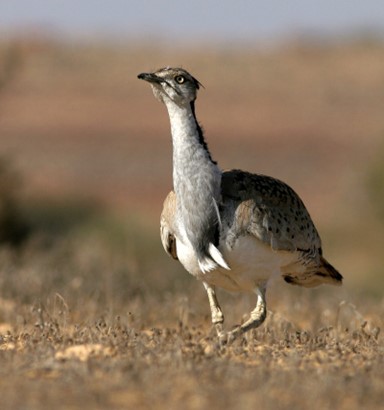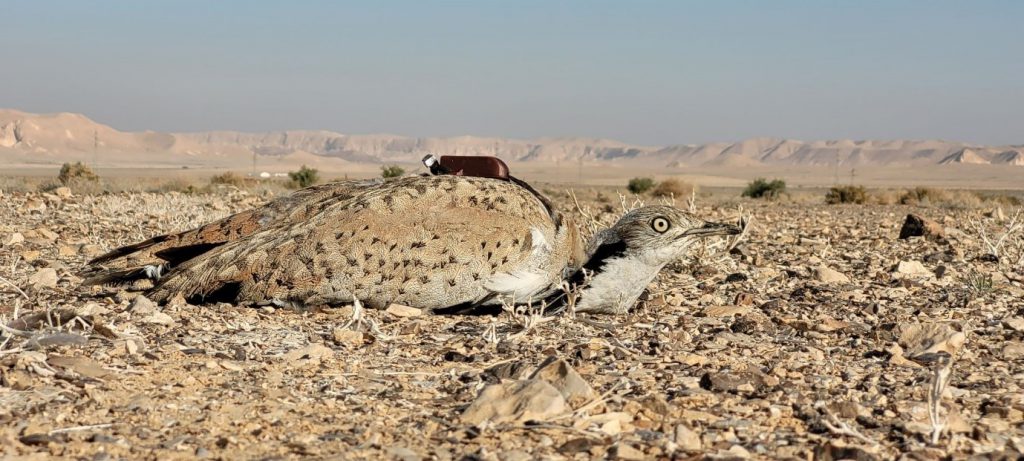
The Asian Houbara Bustard (Chlamydotis macqueeni) is the largest ground-nesting bird species breeding in Israel and the middle-east. It’s impressive and iconic appearance and behavior have made it a natural flagship species, representing the diverse avifauna of the Negev plains. Unfortunately, this group that includes 26 bird species is also the most severely impacted by human development, compared to birds that breed in other habitats such as wetlands, forest or cliffs.
The Asian Houbara is regarded as a globally threatened species, and in Israel it is considered endangered, with a population of about 500 birds. The Israeli population is also one of the two remnant resident populations of the Asian Houbara, the other being in Iran. This fact, together with the peripheral situation of the Israeli population, stresses its interest for the conservation of the genetic diversity of the species as these Houbara may present significant local adaptation. In recent genetic studies, the Israeli population appears as the most differentiated from other populations within the species’ range.
In this research, applying newly available genomic techniques will allow us to investigate the existence of local adaptations, the genetic structure of the remnant population and its potential differentiation from other populations across the range. This will help provide recommendations for adequate conservation measures.
The field work of the study would focus on the distribution and abundance of the Houbara in the Negev desert, its habitat use and seasonal movements. There is a crucial need for better assessment and identification of the movement corridors between breeding and wintering areas. Habitat use will be studied by intersecting environmental data (e.g., habitat composition) and bird movements.
Tracking data and observational count data will be used to construct a Species Distribution Model at the scale of the country and highlight most suitable habitat for the species. Movement data, habitat use, and mortality events will help identify critical areas (mortality hotspots) and precise causes of mortality.
The expected results from the movement ecology study (habitats, land uses and threats) and the demographic study (distribution, densities, breeding and survival) will provide insightful data for the establishment of a suitable action plan for the Houbara, as part of an updated INPA Houbara’s conservation and management plan and as part of the Ramat Negev regional council’s master Plan.
Cover photo above: Male Asian Houbara (Asaf Mayrose).

